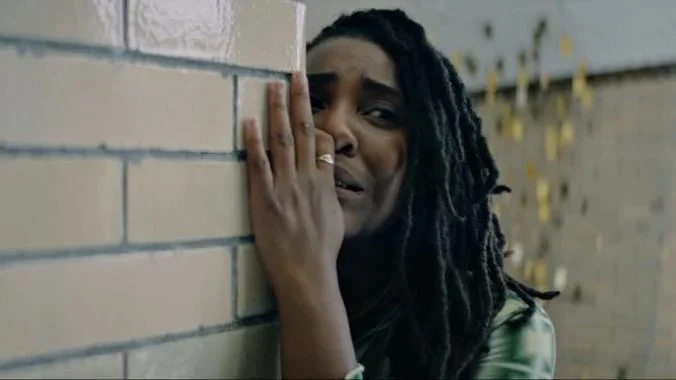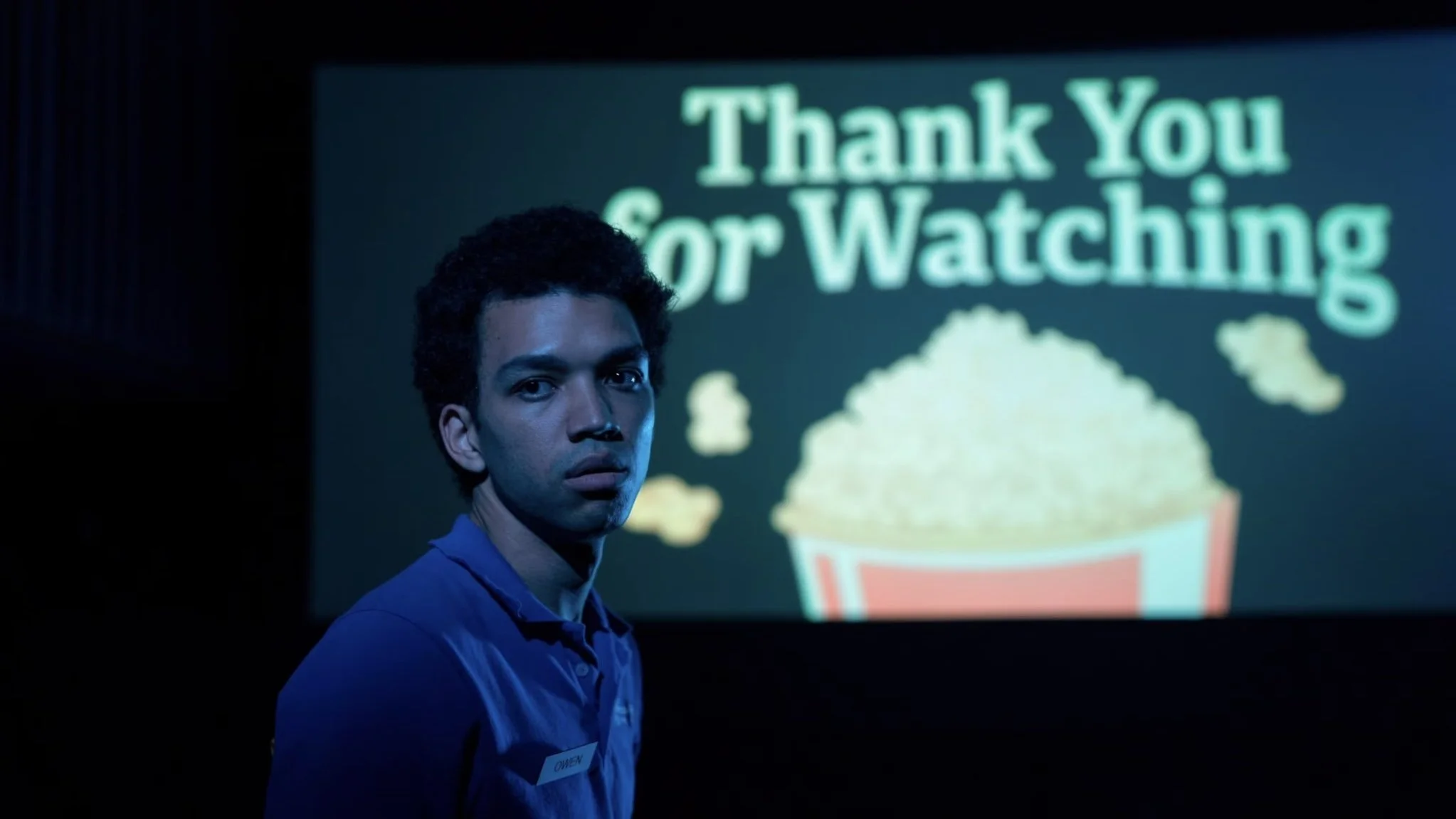Film Review — "Killer Body Count" & "The Shadowed Mind"
A young woman arrives at a private institution in the middle of nowhere that treats sexual impulses and neuroses. As she and her fellow patients become [clears throat] acquainted with each other, a vicious killer roams the grounds and brutally murders them one by one.
That’s the stripped-down, bare-bones premise of Killer Body Count, the new Tubi-original slasher, and The Shadowed Mind, an 80s giallo deserving of re-discovery. The two films utilize a similar setup to explore the irrepressible, combustible nature of human sexuality from two very different angles.
Director Danishka Esterhazy’s Killer Body Count examines post-pubescent female sexuality through the lens of religion and misogyny. Cami, played by Cassiel Eatock-Winnik, is mistaken for a sexual deviant when she is caught getting intimate with a young man in the backroom of her church. Concerned that she may be a burgeoning sex fiend, her father and the priest send her to the Christian faith-based Beautiful Savior Treatment Center, a care facility meant to help youths with a healthy libido (oh, the humanity!) get realigned with God.
Esterhazy brings a much-appreciated feminine zeal to Killer Body Count. The women in it are sexual beings, just like the boys. Not only do they crave carnal pleasures, but they actually want to delight in them, too—and insist upon it. The audacity! So, the boys, in a sense, are simply a means to an (often premature) end. They’re tools, décor, there to be exploited, in the flesh or as eye candy via a Porky’s-esque peephole that the girls use to ogle the boys’ lean, masculine bodies while they shower. In doing so, Esterhazy visually pulls off a wonderful reversal from the norm here by objectifying the young men in the manner we’re accustomed to seeing women used in horror. A steamy extended montage of one guy in particular, lathering up and rinsing off, is definitely for the enjoyment of any “jezebels” watching.
Even though the female characters know what they want and choose to pursue it, they cannot do so without risking serious consequences. In other words, they do not have full autonomy, or grace to make mistakes, as they mature. No surprise, the girls’ punishments for indiscretions are much worse than that of the boys; in a way, I’m shocked there were even male patients at Beautiful Savior Treatment Center to begin with. Western religions have historically been tougher on women than men, with far more restrictions and judgments cast upon them. So, when we hear about a killer on the prowl for “the blood of whores” at this Christian facility, it totally tracks—like, sure, of course he is.
Except… what we’re told is not entirely true. Not only do the men bear far more than the ladies, but they take the brunt of the violence, too, because the killer seems to be more interested in the blood and guts of fledgling lotharios—AKA, womanizers in the making. The handful of kills we get are nicely done and prove you don’t need to compensate with outlandish, out-of-the-box bloodshed if everything else is in standard working order. After all, simple, well-executed disembowelments are appropriate for every occasion.
Killer Body Count gets the job done. It is, technically speaking, not spectacular by any means, nor does it need to be, nor does it want to be. And that’s fine. I am, however, grateful to be able to see what’s happening during the night scenes, so props for that, because that actually is pretty remarkable these days, unfortunately. So even though it’s not a crime to be an okay-shot film, I do have a soft spot in my cold, dead heart for horror movies that are visually extravagant, if only for the mood of it all, or just because it suits someone’s fancy.
With that said… The Shadowed Mind, a severely overlooked South African giallo from 1988, is everything I want in a slasher—shamelessly lewd and expressively shot.
Several of the actors—the men and the women—disrobe repeatedly and appear to have no problem with revealing skin. The protagonist, Stephanie, for instance, checks in to the Hildesheimer clinic due to her compulsion to show her tits any chance she gets. So, yes, we see actress Adrienne Pearce’s magnificent breasts more than once. Naturally, the other characters also have improprieties that compel the actors to be immodest from time to time. All in all, the cast of The Shadowed Mind is pretty uninhibited, which I especially admire here because they are noticeably older, or at least they read a little older, than the cast of Killer Body Count. And I honestly love that, as someone who’s still wicked hot in his 30s. The film is highly sexual and weirdly sexy—so much so that the prudish politicians of South Africa tried to obstruct people from seeing it.
You know you’re doing something right if someone tries to ban you. And South Africa successfully did for a while. The film was outlawed for several years. It also went largely unseen in the United States due to its X rating, which prohibited it from being screened in most theaters during the time of its release. The Shadowed Mind has only recently been more widely seen thanks to boutique film labels and streaming platforms. Art usually wins out, and that’s exactly what The Shadowed Mind is.
It’s an artsy, sexually-charged giallo-slasher attempting to be in the vein of Argento or Bava. It’s a solid effort and looks fabulous, I think. But like with all art, it is what you make of it; you get out of it what you put in. And if you’re willing to give, there’s a lot to glean. I, for one, had a good time engaging with the aesthetics in particular and trying to meet the garishness on its level. I came away thinking that The Shadowed Mind a bold, gruesome gem. And well made, to boot, all things considered.
Dr. Hildesheimer’s clinic in the film is basically an old warehouse made to look like a moody institute (indie filmmakers love an abandoned warehouse). Cinematographer George Bartels and art director Ruth Strimling manage to give the location a castle-like ambiance that lends the picture a modern gothic vibe, which in turn adds gusto to all the indecency. Bartels employs an array of colors throughout, whether they’re practical or not, and the film is all the better for it; the dramatic, seemingly window-motivated beams of light, which sometimes crisscross and thereby contradict their own origin, are my favorite. Then, Strimling’s sets are a complementary mix of harsh and romantic. She embraces the location’s native features and weaves barbarous touches of sensuality into director Cedric Sundstrom’s concrete and steel prison for the horny.
Cedric Sundstrom’s horrorific scenario, unlike Danishka Esterhazy’s, is not rooted in piety. The Hildesheimer facility feels more like a psychological asylum, because to be unconventionally horny is to be crazy, apparently. So, the killer stalking the halls in The Shadowed Mind is not sniffing out “the whores of Babylon” specifically—just sluts in general [not derogatory]. The murders aren’t quite as gory either, but they’re still pretty grisly. To me, there’s something so horrifying about an extended, secular stabbing…
Although the two films are distinct in their own ways, they do have quite a bit of overlap, as you’ve likely gathered. In addition to the setup resemblances, I’d be remiss if I neglected to mention that both films feature queer characters. I mean, you can’t have a film about sexual deviants without a homo or two! Sundstrom’s depiction of queerness feels more taboo, but that’s probably because it came out so much earlier. Queer themes are more mainstream now, so Esterhazy’s portrayal doesn’t read as dangerous in any sense, and I guess that’s kinda the point of her film, anyway.
To be clear, I’m not accusing Killer Body Count, which is a Canadian-South African co-production, of ripping off The Shadowed Mind, but these two stab-happy films certainly echo each other. Killer Body Count may be the more broadly appealing of the pair in just about every way, but I prefer the ostentation of The Shadowed Mind, hands down.


